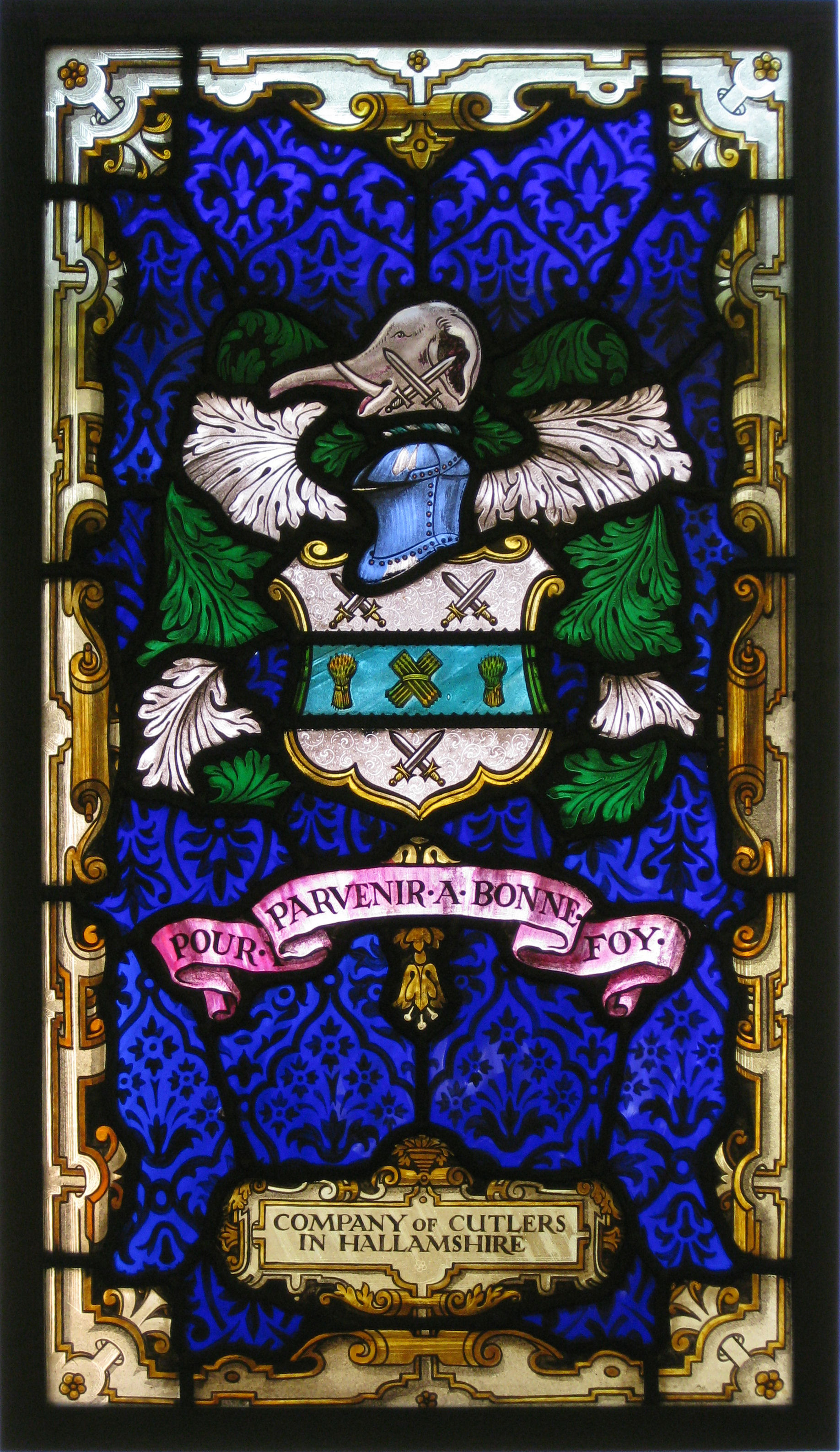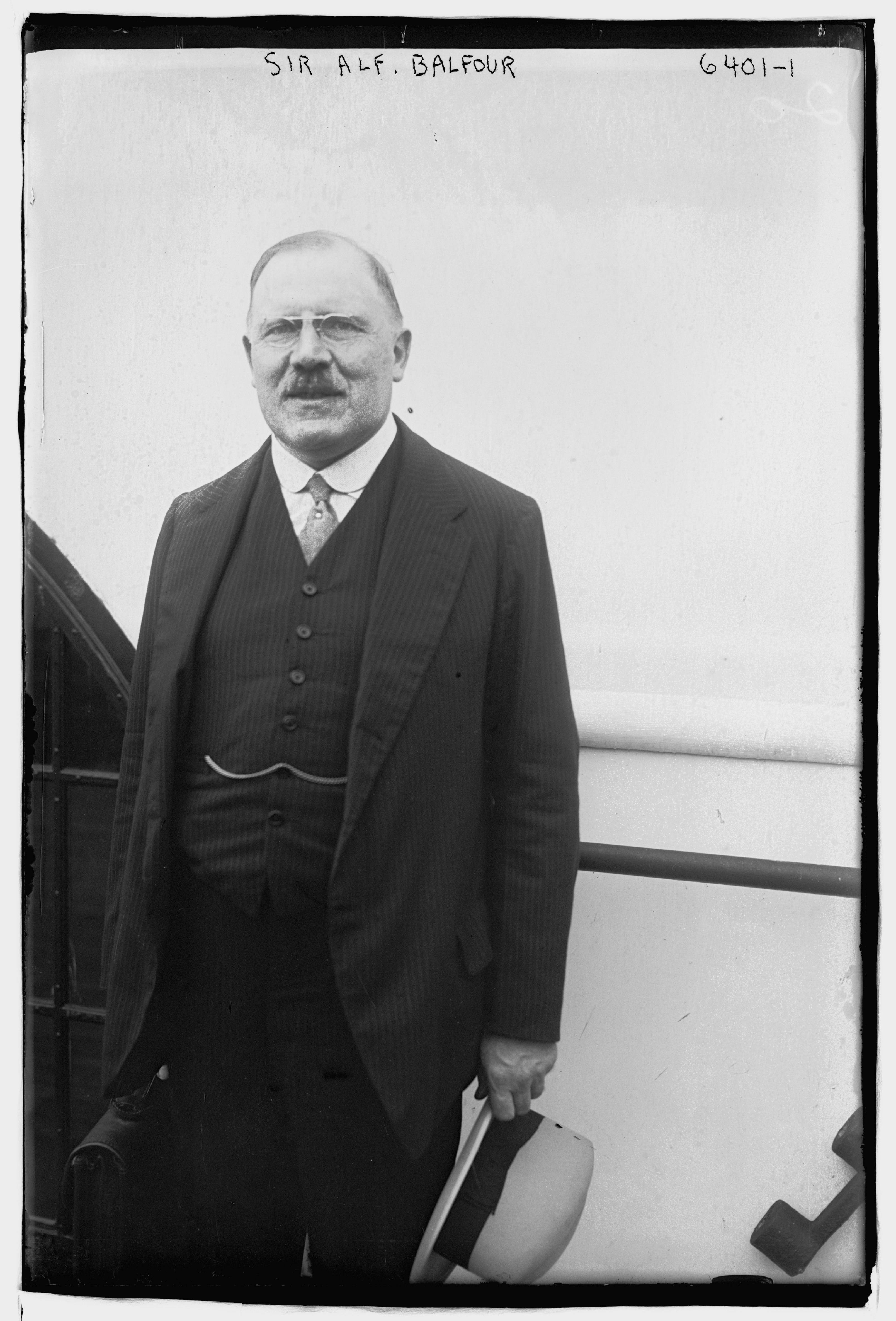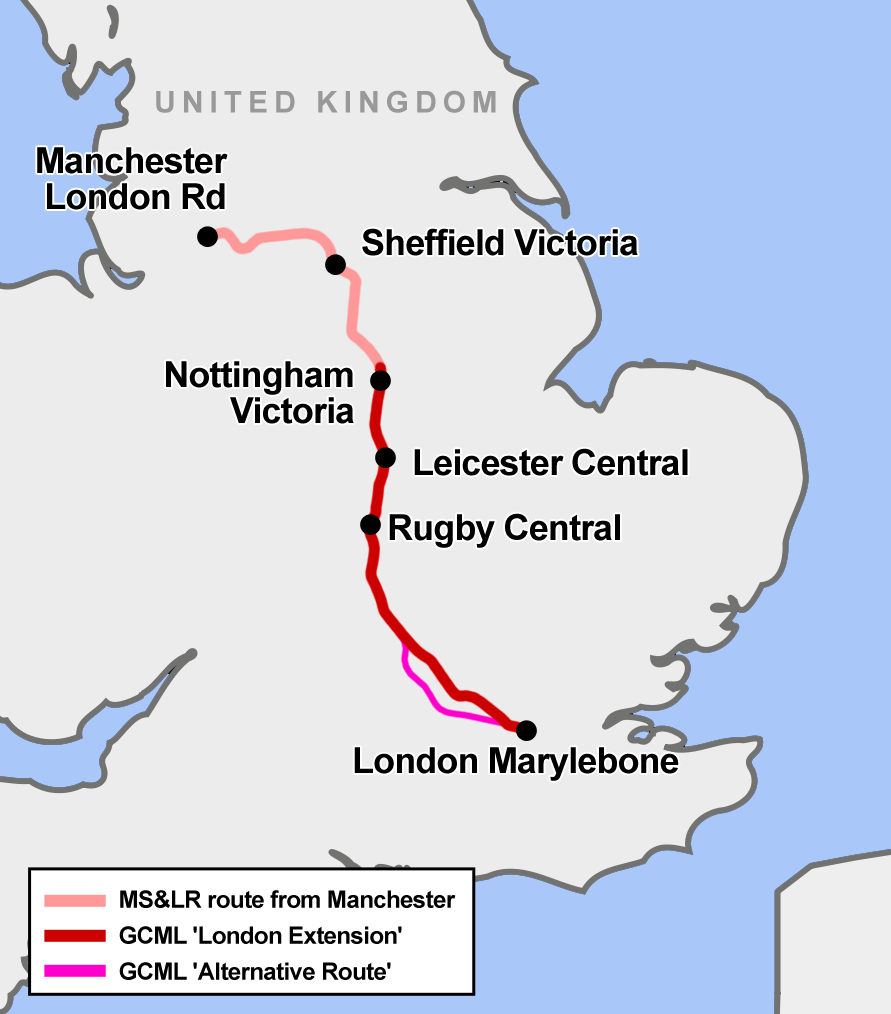|
Master Cutler
The Master Cutler is the head of the Company of Cutlers in Hallamshire established in 1624. Their role is to act as an ambassador of industry in Sheffield, England. The Master Cutler is elected by the freemen of the company on the first Monday of September of each year and the position taken in the first Tuesday of October. Despite the title, the Master Cutler does not have to be involved in the cutlery business, or even the steel industry, to be elected. The first Master Cutler was Robert Sorsby (1577–1643). His son, Malin Sorsby, was Master Cutler in 1647, and in turn his son Robert Sorsby took the office in 1669. Another Robert Sorsby, a cousin of the first, held the post in 1628. The Installation of the new Master Cutler and Company follows the annual election of the new Company. In the early years of the Company, the Election, Installation, Church Service and celebratory meal (which eventually became the Cutlers’ Feast) all happened on the same day. Now, only the Instal ... [...More Info...] [...Related Items...] OR: [Wikipedia] [Google] [Baidu] |
Company Of Cutlers In Hallamshire
The Company of Cutlers in Hallamshire is a trade guild of metalworkers based in Sheffield, England. It was incorporated in 1624 by an Act of Parliament. The head is called the Master Cutler. Its motto is french: 1=Pour Y Parvenir a Bonne Foi, links=yes, lit=To Succeed through Honest Endeavour. In the original act of Parliament, the company was given jurisdiction over: :"all persons using to make Knives, Blades, Scissers, Sheeres, Sickles, Cutlery wares and all other wares and manufacture made or wrought of yron and steele, dwelling or inhabiting within the said Lordship and Liberty of Hallamshire, or within six miles compasse of the same".Sheffield Records Online Sheffield Master Cutlers and Apprentices [...More Info...] [...Related Items...] OR: [Wikipedia] [Google] [Baidu] |
Arthur Balfour, 1st Baron Riverdale
Arthur Balfour, 1st Baron Riverdale (9 January 1873 – 7 July 1957), known as Sir Arthur Balfour from 1923 to 1929 and Sir Arthur Balfour, 1st Baronet, from 1929 to 1935, was a British steel manufacturer. Balfour was the son of Herbert Balfour. He was Chairman of Arthur Balfour & Co Ltd and of C Meadows & Co Ltd, both of Sheffield, Yorkshire, and also served as President of the Association of British Chambers of Commerce from 1923 to 1924 and of the British Council from 1947 to 1950 and as Chairman of the Advisory Council for Scientific and Industrial Research from 1937 to 1957. He chaired the Committee on Industry and Trade from 1924 to 1928. In 1935 he was appointed as the chairman of the Departmental Committee on Fire Brigade Services, which became known as the Riverdale Committee. The committee's report resulted in the Fire Brigades Act 1938. Balfour married Frances Josephine Bingham, daughter of Charles Henry Bingham, in 1899. He died in July 1957, aged 84, and was succe ... [...More Info...] [...Related Items...] OR: [Wikipedia] [Google] [Baidu] |
Great Central Main Line
The Great Central Main Line (GCML), also known as the London Extension of the Manchester, Sheffield and Lincolnshire Railway (MS&LR), is a former railway line in the United Kingdom. The line was opened in 1899 and built by the Great Central Railway running from Sheffield in the North of England, southwards through Nottingham and Leicester to Marylebone in London. The GCML was the last main line railway to be built in Britain during the Victorian period. Built by the railway entrepreneur Edward Watkin with the aim to run as a fast trunk route from the North and the East Midlands to London and the south of England. Initially not a financial success, it recovered under the leadership of Sam Fay. Although initially planned for long-distance passenger services, in practice the line's most important function became to carry goods traffic, notably coal. In the 1960s, the line was considered by Dr Beeching as an unnecessary duplication of other lines that served the same places, especial ... [...More Info...] [...Related Items...] OR: [Wikipedia] [Google] [Baidu] |
Master Cutler (train)
The ''Master Cutler'' is a British named express passenger train operated by East Midlands Railway between Sheffield and London St Pancras. It has a somewhat complicated history, with the route and composition changing several times. History In 1947 at a meeting of the Company of Cutlers in Hallamshire Ronald Matthews, a former holder of the office of Master Cutler and Chairman of the London and North Eastern Railway suggested that the 7.40 train from Sheffield Victoria to London Marylebone, returning at 18.15, should be named ''The Master Cutler''. This was agreed by both the Company of Cutlers and the LNER. The then Master Cutler, A Balfour, later the 2nd Lord Riverdale, rode on the footplate of the inaugural train. It has since been a tradition that the Master Cutler ride with the driver of the train during their year of office. The ''Master Cutler'' was introduced by the LNER on 6 October 1947, running on the Great Central Main Line route from Sheffield Victoria to Lond ... [...More Info...] [...Related Items...] OR: [Wikipedia] [Google] [Baidu] |
Marylebone Station
Marylebone station ( ) is a Central London railway terminus and connected London Underground station in the Marylebone area of the City of Westminster. On the National Rail network it is also known as London Marylebone and is the southern terminus of the Chiltern Main Line to Birmingham. An accompanying Underground station is on the Bakerloo line between Edgware Road and in Transport for London's fare zone 1. The station opened on 15 March 1899 as the London terminus of the Great Central Main Line (GCML), the last major railway to open in Britain for 100 years, linking the capital to the cities of Leicester, Sheffield and Manchester. Marylebone was the last of London's main line termini to be built and is one of the smallest, opening with half of the platforms originally planned. There has been an interchange with the Bakerloo line since 1907, but not with any other lines. Traffic declined at Marylebone station from the mid-20th century, particularly after the GCML closed ... [...More Info...] [...Related Items...] OR: [Wikipedia] [Google] [Baidu] |
Sheffield Victoria Railway Station
Sheffield Victoria was the main railway station in Sheffield, Yorkshire, England, on the Great Central Railway, between Chesterfield and Penistone. History Early history Engineered by Joseph Locke, the Sheffield, Ashton-under-Lyne and Manchester Railway linking Manchester and Sheffield opened in 1845. Originally, this line terminated at the Bridgehouses station, which was about to the west of the future Victoria station. In 1847, the Sheffield, Ashton-under-Lyne and Manchester Railway merged with two other railway companies to form the Manchester, Sheffield and Lincolnshire Railway. The station at Bridgehouses had been outgrown, so an extension and new station were planned. John Fowler, who later gained fame for co-designing the Forth Railway Bridge in Scotland, was employed to engineer the extension and station. Fowler's design included a viaduct over the Wicker that was high, long and two island platforms long. The extension was completed in 1847–1848 and the new Vic ... [...More Info...] [...Related Items...] OR: [Wikipedia] [Google] [Baidu] |
London And North Eastern Railway
The London and North Eastern Railway (LNER) was the second largest (after LMS) of the " Big Four" railway companies created by the Railways Act 1921 in Britain. It operated from 1 January 1923 until nationalisation on 1 January 1948. At that time, it was divided into the new British Railways' Eastern Region, North Eastern Region, and partially the Scottish Region. History The company was the second largest created by the Railways Act 1921. The principal constituents of the LNER were: * Great Eastern Railway * Great Central Railway * Great Northern Railway * Great North of Scotland Railway * Hull and Barnsley Railway * North British Railway * North Eastern Railway The total route mileage was . The North Eastern Railway had the largest route mileage of , whilst the Hull and Barnsley Railway was . It covered the area north and east of London. It included the East Coast Main Line from London to Edinburgh via York and Newcastle upon Tyne and the routes from Edinburgh to ... [...More Info...] [...Related Items...] OR: [Wikipedia] [Google] [Baidu] |
COVID-19 Pandemic
The COVID-19 pandemic, also known as the coronavirus pandemic, is an ongoing global pandemic of coronavirus disease 2019 (COVID-19) caused by severe acute respiratory syndrome coronavirus 2 (SARS-CoV-2). The novel virus was first identified in an outbreak in the Chinese city of Wuhan in December 2019. Attempts to contain it there failed, allowing the virus to spread to other areas of Asia and later worldwide. The World Health Organization (WHO) declared the outbreak a public health emergency of international concern on 30 January 2020, and a pandemic on 11 March 2020. As of , the pandemic had caused more than cases and confirmed deaths, making it one of the deadliest in history. COVID-19 symptoms range from undetectable to deadly, but most commonly include fever, dry cough, and fatigue. Severe illness is more likely in elderly patients and those with certain underlying medical conditions. COVID-19 transmits when people breathe in air contaminated by droplets and ... [...More Info...] [...Related Items...] OR: [Wikipedia] [Google] [Baidu] |
Pamela Liversidge
Pamela Edwards Liversidge (born 1949) was the first female president of the Institution of Mechanical Engineers. Life She was born 23 December 1949 (née Humphries) and graduated with a BSc in Mechanical Engineering from Aston University.Apex issue 2 (1998) page 7, Aston University After graduating she worked for GKN as a Graduate Trainee, then moved into forging with a small company based in . Following this she moved into the electricity supply industry, becoming Divisional Director of |
Hugh Neill
Sir James Hugh Neill, (29 March 1921 – 5 November 2017) was a British businessman, public servant, and British Army officer. Described as a "doyen of the Sheffield steel industry", he worked for his family's tool manufacturing firm, James Neill & Co, following leaving school, until retirement (1939 to 1989); he served as the firms chairman between 1963 and 1989, and then its honorary president. He served as Master Cutler for 1958. Neill's only break in his business career was for service in the British Army during the Second World War: he was an officer in the Royal Engineers and had reached the rank of lieutenant colonel by end of the war. In addition to his business interests, he was a public servant. He served as High Sheriff of Hallamshire from 1972 to 1973, and as Lord Lieutenant of South Yorkshire from 1985 to 1996. In 1958, like his father and both his grandfathers, he was Master Cutler for the Company of Cutlers in Hallamshire. Early life and education Neill was born ... [...More Info...] [...Related Items...] OR: [Wikipedia] [Google] [Baidu] |
Samuel Roberts, 2nd Baronet
Sir Samuel Roberts, 2nd Baronet JP (2 September 1882 – 13 December 1955) was a British politician. Son of the Sheffield Ecclesall MP Samuel Roberts, Roberts grew up at Queen's Tower in Norfolk Park, Sheffield. He attended Harrow School and Trinity College, Cambridge before becoming a solicitor. In 1913, Roberts became a Justice of the Peace, and in 1919, the Lord Mayor of Sheffield. In 1921, he was elected as the Conservative Party MP for Hereford, and at the 1929 general election he switched to represent his father's former constituency of Sheffield Ecclesall. He stood down at the 1935 general election, serving that year as the Master Cutler The Master Cutler is the head of the Company of Cutlers in Hallamshire established in 1624. Their role is to act as an ambassador of industry in Sheffield, England. The Master Cutler is elected by the freemen of the company on the first Monday of .... References *Michael Stenton and Stephen Lees, ''Who's Who of British M ... [...More Info...] [...Related Items...] OR: [Wikipedia] [Google] [Baidu] |
Arthur Lee (Army Officer)
Lieutenant-Colonel Arthur N. Lee, DSO, OBE, (August 1877- October 1954) was the British military censor in France of paintings by official British war artists during World War I from 1916 to the Peace. Biography Lee was born in Southwell, Nottinghamshire and attended Trinity College, Cambridge, graduating in 1899 and subsequently qualified as a solicitor before becoming a director of the Sheffield cutlery manufacturers Walker & Hall. He was a territorial officer with the Sherwood Foresters from 1903 and on the outbreak of World War I was mobilised with his regiment and sent to the Western Front (World War I), Western Front. In 1916 he served as a Major in Dublin where the Sherwood Foresters suffered heavy losses during the Easter Rising and was awarded the DSO. He was then transferred to the HQ of the British Expeditionary Force as a Lieutenant-Colonel where he was appointed military censor. He had several well-recorded disputes with war artists, particularly William Orpen and Ch ... [...More Info...] [...Related Items...] OR: [Wikipedia] [Google] [Baidu] |







